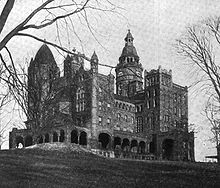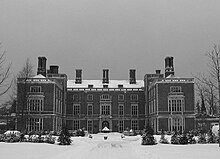
École Centrale de Nantes, or Centrale Nantes, is a grande école - a French engineering school - established in 1919 under the name of Institut Polytechnique de l'Ouest. It delivers Graduate, Master, and PhD Programmes based on the latest scientific and technological developments and the best management practices.

Worcester Polytechnic Institute (WPI) is a private research university in Worcester, Massachusetts. Founded in 1865, WPI was one of the United States' first engineering and technology universities and now has 14 academic departments with over 50 undergraduate and graduate degree programs in science, engineering, technology, management, the social sciences, and the humanities and arts. WPI awards bachelor's, master's and Ph.D. degrees for the completion of these programs. It is classified among "R2: Doctoral Universities – High research activity".
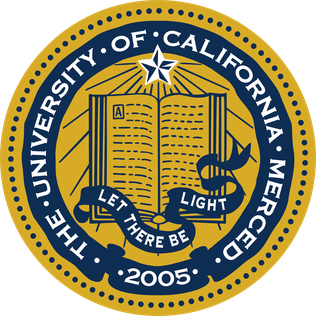
The University of California, Merced is a public land-grant research university and Hispanic-serving institution located in Merced, California, and is the tenth and newest of the University of California (UC) campuses. Established in 2005, UC Merced was founded to "address chronically low levels of educational attainment in the region." UC Merced enrolls 8,321 undergraduates and 772 graduates with 63.8% of students receiving Pell Grants, more than 99% of UC Merced students coming from California, and the largest percentage of low-income students from underrepresented ethnic groups in the UC system.

The California State University Maritime Academy is a public university in Vallejo, California. It is part of the California State University system and the only maritime academy on the United States West Coast. The university offers six bachelor's degree programs and one Master's degree program.

Pratt Institute is a private university with its main campus in Brooklyn, New York. It has a satellite campus in Manhattan and an extension campus in Utica, New York at the Munson-Williams-Proctor Arts Institute. The school was founded in 1887 with programs primarily in engineering, architecture, and fine arts. Comprising six schools, the institute is primarily known for its programs in architecture, graphic design, interior design, and industrial design.

Muskingum University is a private university in New Concord, Ohio. Chartered in 1837 as Muskingum College, the institution is affiliated with the Presbyterian Church (USA).

Florida Atlantic University is a public research university with its main campus in Boca Raton, Florida and satellite campuses in Dania Beach, Davie, Fort Lauderdale, Jupiter, and Fort Pierce. The university is a member of the State University System of Florida. FAU was established as Florida's fifth public university and is classified among "R2: Doctoral Universities – High research activity".

The National (Metsovian) Technical University of Athens, sometimes known as Athens Polytechnic, is among the oldest higher education institutions of Greece and the most prestigious among engineering schools. It is named Metsovio(n) in honor of its benefactors Nikolaos Stournaris, Eleni Tositsa, Michail Tositsas and Georgios Averoff, whose origin is from the town of Metsovo in Epirus.

Pittsburg State University is a public university in Pittsburg, Kansas. It enrolls approximately 7,400 students and is a member of the Kansas Board of Regents.

Principia College is a private liberal arts college in Elsah, Illinois. It was founded in 1912 by Mary Kimball Morgan with the purpose of "serving the Cause of Christian Science." "Although the College is not affiliated with the Christian Science Church, the practice of Christian Science is the cornerstone of campus life."

Roger Williams University (RWU) is a private university in Bristol, Rhode Island. Founded in 1956, it was named for theologian and Rhode Island cofounder Roger Williams. The school enrolls over 5,000 students and employs over 480 academic staff.

The Citadel, The Military College of South Carolina, commonly known simply as The Citadel, is a public senior military college in Charleston, South Carolina. Established in 1842, it is one of six senior military colleges in the United States. It has 18 academic departments divided into five schools offering 31 majors and 57 minors. The military program is made up of cadets pursuing bachelor's degrees who live on campus. The non-military programs offer 12 undergraduate degrees, 26 graduate degrees, as well as evening and online programs with seven online graduate degrees, three online undergraduate degrees, and three certificate programs.
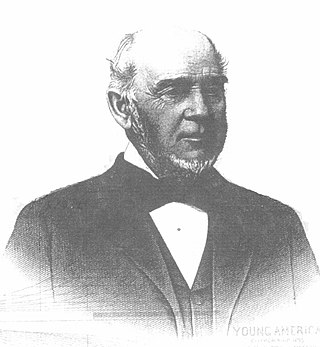
William Henry Webb was a 19th-century New York City shipbuilder and philanthropist, who has been called America's first true naval architect.
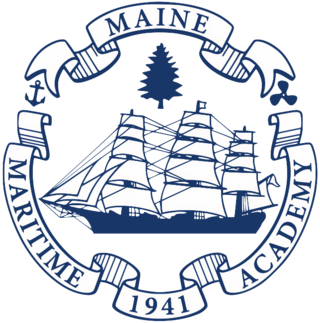
Maine Maritime Academy is a public college focused on maritime training and located in Castine, Maine. The academy was established by the 90th Maine Legislature on March 21, 1941. Unlike federal service academies, a congressional recommendation is not required to attend this state school. Students are not obligated to go to sea or into the military after graduation, and a large portion of the graduating class chooses shore-side employment, often in maritime-related fields or the power generation industry.

Northland College is a private college in Ashland, Wisconsin. Founded as the North Wisconsin Academy in 1892, the college was established in 1906. Originally affiliated with the Congregational Church, the college remains loosely tied to the Congregational Church's descendant, the United Church of Christ. It enrolls 526 full-time undergraduates and employs 60 faculty members and 99 staff members. Northland College is accredited by the Higher Learning Commission.

Aurora University (AU) is a private university in Aurora, Illinois. In addition to its main campus, AU offers programs online at its George Williams College campus in Williams Bay, Wisconsin as well as its Woodstock Center in downtown Woodstock, Illinois. Approximately 6,200 students are enrolled in bachelor's, master's, and doctoral degree programs at Aurora University.

Stephen Michael Payne, is a British naval architect. He has worked on the designs of approximately 40 passenger ships for the Carnival Corporation, including the Cunard ocean liner Queen Mary 2. He is currently an independent maritime consultant and is an educational advocate for engineering careers.

Embry–Riddle Aeronautical University, Prescott is a residential campus of Embry-Riddle Aeronautical University in Prescott, Arizona. The university offers bachelor and master's in arts, sciences, aviation, business, engineering, and security & intelligence. The Prescott campus also offers a master's degree in Safety Science, Security & Intelligence, and Cyber Intelligence & Security.

The École Nationale Supérieure de Techniques Avancées de Bretagne often referred as ENSTA Bretagne formerly ENSIETA is one of the 207 French engineering schools accredited on 1 September 2017 to deliver engineering diplomas. The ENSTA Bretagne is a higher education establishment and a research centre run under the supervision of the French Ministry of Armed Forces which governs a total of 4 engineering schools: École Polytechnique, ENSTA ParisTech, ENSTA Bretagne and ISAE-Supaero. It is the most prestigious engineering school in France which deals with marine and naval engineering.
The Chalmers Naval Architecture Students' Society is a naval architecture graduate students group at Chalmers University of Technology, Sweden. The Society was found in 1887 following the establishment of the Naval Architecture and Ocean Engineering Department at the University. Since 1948, Föreningen Chalmers Skeppsbyggare has been a member of the Nordic Technical Universities Shipbuilders Congress (NTHS) which includes Chalmers, Technical University of Denmark, Helsinki University of Technology in Finland, Norwegian University of Science and Technology, and the Royal Institute of Technology in Sweden. Roughly, half of the FCS members are from Sweden while the rest are international students. Some of its members are also current members of the Society of Naval Architects and Marine Engineers. Unlike other student organizations at Chalmers, the society runs as a separate entity from the Chalmers Students' Union.

